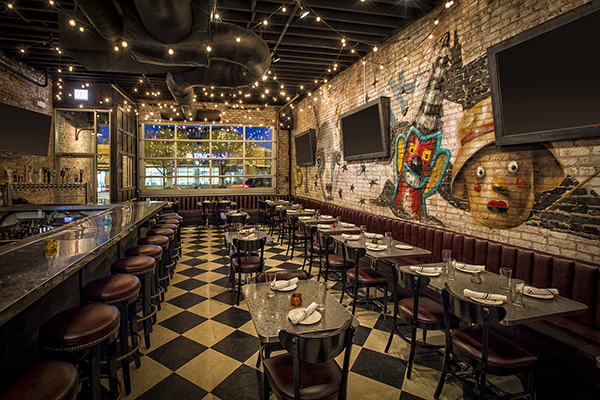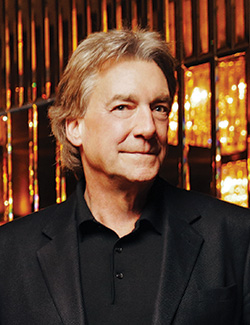 Jeffrey Beers is founder and CEO of Jeffrey Beers International (JBI). Beers has built a stellar career on creating distinctive and visionary spaces recognized for their lasting appeal. While an architecture student at the Rhode Island School of Design, he studied with renowned glass artist Dale Chihuly.
Jeffrey Beers is founder and CEO of Jeffrey Beers International (JBI). Beers has built a stellar career on creating distinctive and visionary spaces recognized for their lasting appeal. While an architecture student at the Rhode Island School of Design, he studied with renowned glass artist Dale Chihuly.
After graduating, Beers traveled to Brazil on a Fulbright scholarship with a goal of investigating how the arts and architecture could have a more symbiotic relationship. In Brazil, he worked in the office of architect Oscar Niemeyer. Upon returning to New York, Beers accepted a position as a project architect with I.M. Pei & Partners, where he managed hotel and entertainment properties throughout the world. In 1986, he founded JBI.
Since then, the award-winning studio has received recognition for its outstanding hospitality designs as well as Beers’ ability to unite artistry and strategy to create highly successful spaces. Here, he shares some current and upcoming restaurant design trends.
+ Instagram-friendly spaces. With the increased importance of social media, a major design trend is to ensure the space is Instagram-friendly. Everything from the flooring and wall finishes to including artwork representing the local community are all opportunities to engage with the voracious appetite for snapping and sharing.
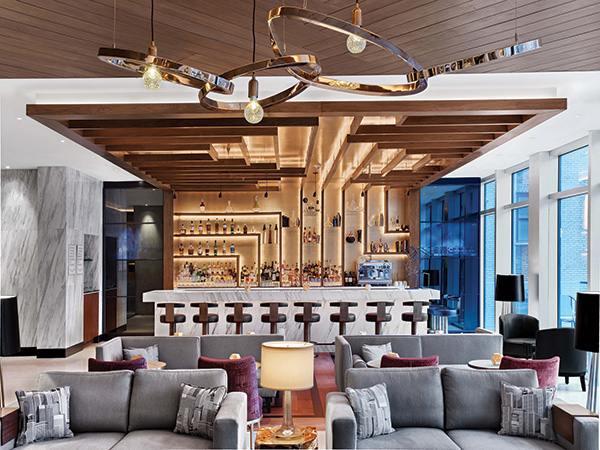 The lobby bar at the Renaissance New York Midtown. Image courtesy of Eric Laignel
The lobby bar at the Renaissance New York Midtown. Image courtesy of Eric Laignel
+ Lighting design. Social media is also important when considering the lighting design as it trends away from dim, dark restaurants and allows for more appealing photography perfect for social media. Additionally, lighting will be less architectural and more decorative in an effort to create warmer, more theatrical environments. For example, Japanese light artist Hitoshi Kuriyama designed an expansive installation that commands the two-story dining room at Sequoia in Washington, D.C., without obstructing views from the dining room or the mezzanine.
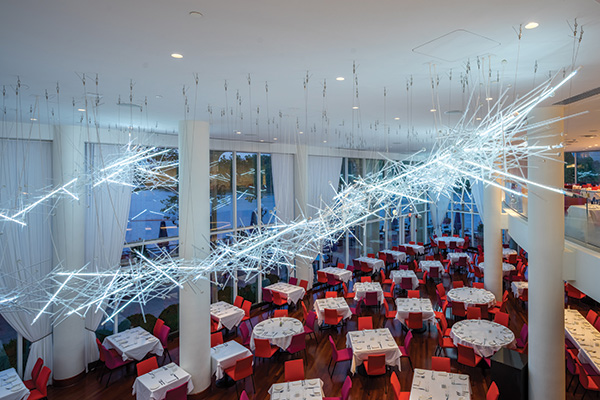 The lighting installation is made of 913 custom-fabricated glass and 200 neon tubes suspended in a “path and branches” pattern that spans more than 125 feet across the main dining space. Image courtesy of Jason Flakes
The lighting installation is made of 913 custom-fabricated glass and 200 neon tubes suspended in a “path and branches” pattern that spans more than 125 feet across the main dining space. Image courtesy of Jason Flakes
+ Open kitchens. We are currently working on a project, Hell’s Kitchen, which highlights another key trend: open kitchens. Diners are looking for experiences and more insight to the creation of their food, so design has morphed to dissolve the wall between diner and chef. By designing restaurants around an open kitchen, the craft of cooking is highlighted, and the diners can see, hear and smell the food being prepared.
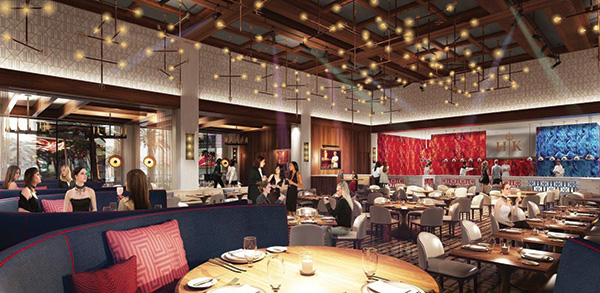 Image courtesy of Jeffrey Beers International
Image courtesy of Jeffrey Beers International
+ Local sourcing. Rather than designing with products from national distributors, we see a trend toward working with homegrown fabricators to specify design components within restaurants. This trend embraces the maker movement and supports the growth of local economies, which is especially important in burgeoning cities like Nashville and Detroit. At Gotham Market at the Ashland in Brooklyn, custom black steel pipe chandeliers, which have exposed filament bulbs and custom glass globes, were made across the street from the food hall at UrbanGlass by artist Adam Holtzinger. Each food concept also features an open kitchen.
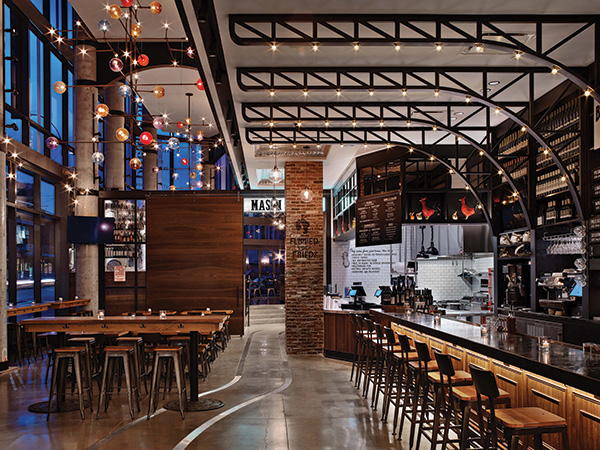 Image courtesy of Eric Laignel
Image courtesy of Eric Laignel
+ Sleek and rich overtakes industrial. We are also seeing a decline in the rustic and industrial aesthetic and a shift toward a cleaner, minimal approach. Sleeker surfaces, richer woods, more luxurious furniture and engineered detailing will all be more prevalent in the upcoming years. We employed this aesthetic at Curtis Stone’s SHARE restaurant for Princess Cruises. An additional shift in materials will be seen in metal finishes, with a move away from the warm tones of brass and copper and toward polished and satin nickel finishes.
 Image courtesy of Share
Image courtesy of Share
Bonus Trends
+ Retail restaurants. We’ll see 2018 developing more multifunctional spaces where retail and dining merge. Roman & Williams recently opened a retail space in SoHo that includes a cafe and flower shop within the retail space. We’ve seen other similar developments where a coffee shop shares a space with a bookstore and candle company. This symbiosis allows the design to define each shop within a shop while still supporting the larger design concept.
+ Technology and video integration. Video art within the restaurant is an increasingly popular design component. Livestreaming videos of food being prepared in the kitchen and allowing diners to track their order’s progress is an exciting new component that will greatly affect restaurant design in the years to come.
+ Desert modernism. While midcentury modern is not a new trend, the new midcentury inspiration is coming from sunny Palm Springs, Calif. This version of midcentury modern, or desert modernism, is becoming more popular in fashion and graphic design, and we will see it become more prevalent in restaurant interiors. The clean lines and use of glass and natural materials seamlessly fit within the direction we see becoming more popular within restaurants.


